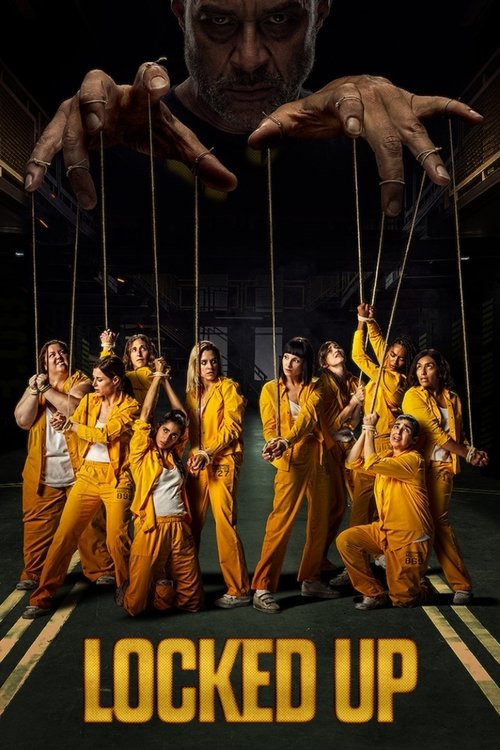
Ask Your Own Question
What is the plot?
In the opening scenes of "Las palomas y las bombas," we are introduced to the protagonist, a young woman named Valeria, who lives in a small, war-torn town. The atmosphere is tense, with the sounds of distant explosions and the sight of crumbling buildings setting the stage for the chaos that surrounds her life. Valeria is shown scavenging for food and supplies, revealing her resourcefulness and determination to survive amidst the turmoil. Her internal struggle is palpable as she grapples with the loss of her family, who were victims of the ongoing conflict.
As Valeria navigates her daily life, she encounters a group of rebels who are fighting against the oppressive regime. Among them is a charismatic leader named Mateo, who inspires hope in the townspeople. Valeria is drawn to Mateo's passion and vision for a better future, and she begins to assist the rebels by providing intelligence about the enemy's movements. This decision marks a turning point for Valeria, as she becomes more deeply involved in the conflict, driven by a desire for justice and revenge for her family's death.
The narrative escalates when the rebels plan a major attack on a government stronghold. Valeria is tasked with a crucial role: to infiltrate the enemy's territory and gather vital information. The tension builds as she prepares for the mission, her heart racing with fear and determination. During the infiltration, Valeria faces numerous obstacles, including close encounters with enemy soldiers. Her quick thinking and agility allow her to evade capture, but the experience leaves her shaken and questioning her choices.
As the attack unfolds, the rebels face unexpected resistance. The government forces are better equipped than anticipated, leading to a chaotic and violent confrontation. Valeria witnesses the brutality of war firsthand, as friends and allies are injured or killed. In a moment of desperation, she makes a split-second decision to save Mateo, who is pinned down by enemy fire. She risks her own life to pull him to safety, solidifying her commitment to the cause and deepening their bond.
In the aftermath of the attack, the rebels regroup and assess their losses. Valeria is haunted by the violence she has witnessed and the lives lost. Mateo, recognizing her bravery, promotes her to a more significant role within the group, which brings both pride and pressure. Valeria struggles with the weight of her new responsibilities, feeling the burden of leadership while still grappling with her personal trauma.
As the story progresses, Valeria uncovers a betrayal within the rebel ranks. A trusted ally is revealed to be a spy for the government, feeding information that jeopardizes their operations. This revelation leads to a tense confrontation, where Valeria must confront her feelings of betrayal and anger. The internal conflict is intense, as she grapples with the idea of justice versus vengeance. Ultimately, she decides to confront the traitor, leading to a dramatic showdown that tests her resolve and moral compass.
The climax of the series occurs when the rebels launch a final, desperate offensive against the government forces. Valeria, now fully committed to the cause, leads a group of fighters into battle. The scene is filled with chaos and destruction, as explosions rock the landscape and the sounds of gunfire echo in the air. Valeria's leadership is put to the test as she navigates the battlefield, making split-second decisions to protect her comrades and push forward.
In a heart-stopping moment, Valeria comes face-to-face with the commander of the government forces, the man responsible for her family's death. The confrontation is charged with emotion, as Valeria's desire for revenge clashes with her growing understanding of the cycle of violence. In a pivotal decision, she chooses to spare the commander's life, realizing that perpetuating the cycle of hatred will not bring her peace.
The series concludes with Valeria and the remaining rebels standing amidst the ruins of their town, reflecting on the cost of their struggle. The emotional weight of their experiences hangs heavy in the air, as they contemplate the future. Valeria's journey from a survivor to a leader is complete, but the scars of war remain, leaving the audience with a sense of unresolved tension and hope for a better tomorrow.
What is the ending?
In the ending of "Las palomas y las bombas," the main characters face the consequences of their choices amidst the backdrop of conflict and personal turmoil. The story culminates in a tense confrontation that leads to a tragic resolution, leaving the characters forever changed.
As the final scenes unfold, we see the protagonist, Javier, grappling with the weight of his decisions. He stands at a crossroads, torn between his loyalty to his family and the moral implications of his actions. The atmosphere is thick with tension as he prepares to confront the antagonist, a figure representing the darker forces at play in their lives.
In a pivotal moment, Javier confronts the antagonist in a deserted area, where the remnants of past violence linger in the air. The confrontation is charged with emotion, as Javier's internal struggle becomes palpable. He reflects on the choices that have led him to this moment, the sacrifices made, and the lives affected by the ongoing conflict.
As the confrontation escalates, the stakes rise dramatically. Javier's determination to protect his loved ones clashes with the antagonist's ruthless ambition. The scene is fraught with danger, and the audience can feel the weight of Javier's desperation. In a heart-wrenching turn of events, the confrontation leads to a tragic outcome, resulting in loss and heartbreak.
Meanwhile, the other main characters, including Javier's family members, are shown grappling with their own fates. Each character's journey culminates in a moment of reckoning, where they must confront the reality of their choices. The emotional fallout is profound, as relationships are tested and the impact of the conflict reverberates through their lives.
In the final moments, the camera lingers on Javier, who is left to navigate the aftermath of the confrontation. The weight of his decisions hangs heavy on him, and the audience is left with a sense of unresolved tension. The story closes on a somber note, emphasizing the enduring consequences of violence and the fragility of human connections.
Ultimately, the ending of "Las palomas y las bombas" serves as a poignant reminder of the complexities of human nature and the far-reaching effects of conflict on individuals and families. Each character's fate is intertwined with the larger narrative, leaving a lasting impression on the audience as they reflect on the choices made and the lives forever altered.
Is there a post-credit scene?
In "Las palomas y las bombas," there is no post-credit scene. The series concludes its narrative without additional content after the credits, focusing instead on the resolution of its main plot and character arcs. The final moments of the last episode encapsulate the emotional journeys of the characters, leaving viewers with a sense of closure regarding their stories. The absence of a post-credit scene emphasizes the weight of the concluding events, allowing the audience to reflect on the themes of conflict, resilience, and the impact of choices made throughout the series.
What motivates the main character, Javier, throughout the series?
Javier is driven by a deep sense of loss and a desire for redemption. His past is marked by the tragic death of his brother, which fuels his quest for justice and understanding. As he navigates the dangerous world of crime and betrayal, his internal conflict between vengeance and morality becomes a central theme.
How does the relationship between Javier and Ana evolve over the course of the series?
Javier and Ana's relationship begins with tension and mistrust, as Ana is initially skeptical of Javier's intentions. However, as they face various challenges together, including threats from rival gangs, their bond deepens. Ana's emotional struggles with her own past and Javier's unwavering support lead to a complex romantic connection that is both passionate and fraught with danger.
What role does the character of El Lobo play in the story?
El Lobo serves as both an antagonist and a catalyst for Javier's transformation. His ruthless tactics and manipulation force Javier to confront his own values and the lengths he is willing to go to protect those he loves. El Lobo's presence creates a constant sense of tension, pushing Javier to make difficult choices that ultimately shape his character arc.
How does the setting of the city influence the characters' decisions and actions?
The gritty urban landscape of the city is a character in itself, reflecting the chaos and danger that the characters face. The stark contrasts between affluent neighborhoods and impoverished areas highlight the socio-economic divides that influence the characters' motivations. The city's underbelly, filled with crime and corruption, serves as a backdrop for Javier's journey, forcing him to navigate a world where trust is scarce and survival is paramount.
What is the significance of the recurring motif of pigeons in the series?
Pigeons symbolize both freedom and entrapment throughout the series. For Javier, they represent his longing for escape from his troubled past and the violence that surrounds him. The moments when he interacts with pigeons often reflect his internal struggles and desire for peace. This motif serves as a poignant reminder of the choices he must make and the consequences that follow.
Is this family friendly?
"Las palomas y las bombas," produced in 2016, is a drama that delves into complex themes and emotional struggles. While it offers a rich narrative, it may not be considered family-friendly due to several potentially objectionable or upsetting aspects.
-
Violence and Conflict: The show features scenes of violence that may be distressing, including confrontations and the impact of war on civilians.
-
Emotional Turmoil: Characters experience significant emotional pain, including grief, loss, and trauma, which may be heavy for younger viewers or sensitive individuals.
-
Themes of War and Displacement: The narrative explores the harsh realities of war, including displacement and the struggles of refugees, which can be intense and thought-provoking.
-
Mature Relationships: There are complex adult relationships that may include themes of betrayal, infidelity, and emotional manipulation, which might not be suitable for children.
-
Cultural and Social Issues: The show addresses serious social issues that may require a mature understanding, such as poverty, inequality, and the consequences of political decisions.
These elements contribute to a narrative that is more appropriate for older teens and adults rather than a younger audience.

































